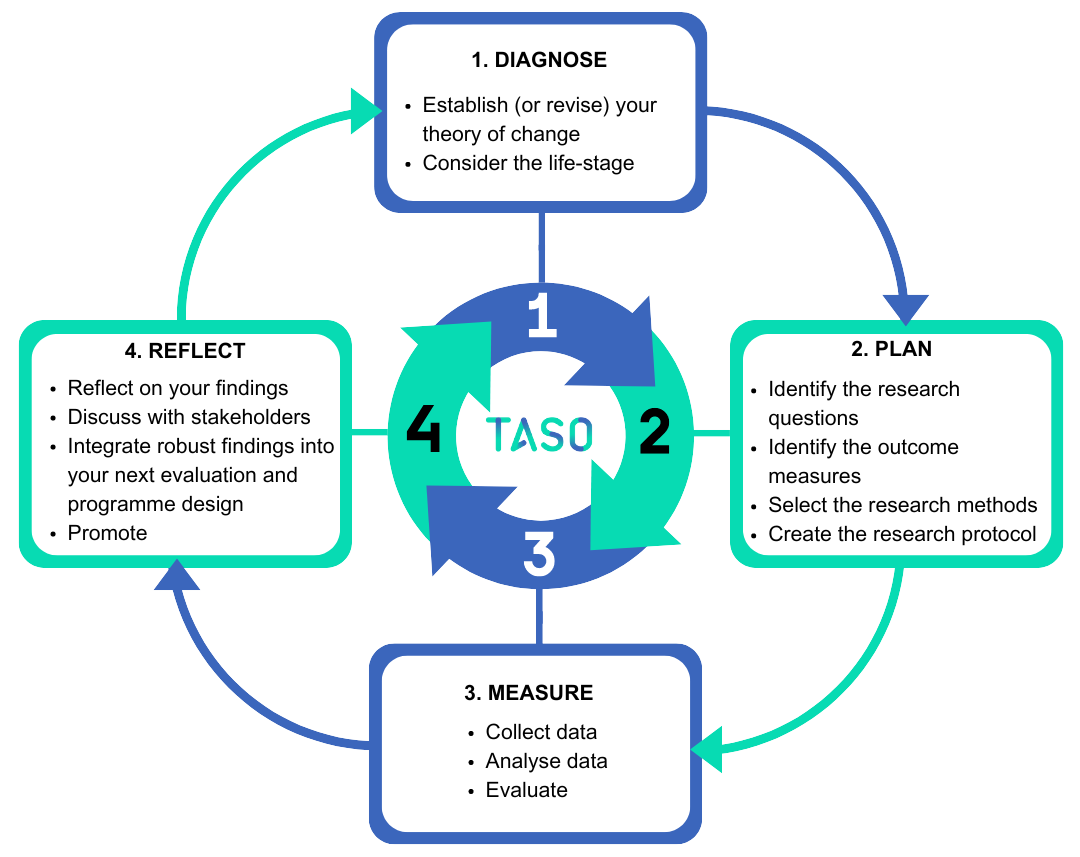Evaluators |
To create a more inclusive higher education system, institutions in England are required to take active steps to address barriers faced by underrepresented groups.
Since 2018 the Office for Students (OfS), the regulator for higher education in England, has required all registered providers in the approved (fee cap) category to submit an access and participation plan (APP), which details how providers will support access and participation for underrepresented groups in higher education.
The regulations governing APPs were updated in 2023 to require higher education providers (HEPs) to identify risks to equality of opportunity in access, participation and progression, and provide details of interventions designed to eliminate these risks. In addition, HEPs are expected to evaluate the impact of these interventions and publish their results.
The purpose of this guide is to help HEPs use their institutional data to identify equality gaps in student success and evaluate the effectiveness of interventions designed to reduce them.
Institutional data is data that is recorded and used as part of an institution’s administration and operations process. It includes data about student demographics, students’ interaction with institutional systems (such as attendance, virtual learning environment use, and engagement with support services), attainment, and course information (such as contact hours and modes of assessment).
What is this document?
This document is a practical guide on using institutional data to address several key areas. It aims to help enable HEPs to:
- identify equality gaps in higher education
- identify where those equality gaps may be particularly acute, to enable effective design of post-entry student success activities
- help generate robust Type 3 (causal) evidence of the success of student support interventions.
Additionally, this guide provides considerations for:
- planning an evaluation of student success interventions
- obtaining ethical approval to carry out an evaluation and publish the results of an intervention
Who is this guide for?
Different sections are aimed at different audiences but overall this document will be useful for:
- evaluators
- practitioners
- those responsible for writing their institution’s APPs
- planning teams
- senior executive/management with responsibility for supporting student success.
In each section, it is indicated who that part of the guide is aimed at, e.g.:
There are a large variety of HEPs in England, from small and specialist providers with tens of students, to the very largest with tens of thousands. Where possible we have tried to make this guide useful for a wide range of providers, though some sections will be more relevant to some types of providers than others.
How is the guide organised?
The guide is organised around the four stages of TASO’s Monitoring and Evaluation Framework (MEF), pictured in Figure 1. In addition, there are sections on common barriers to and facilitators of evaluation of student success work.
The MEF icon will be used to signify the applicable part of the MEF for each section.
